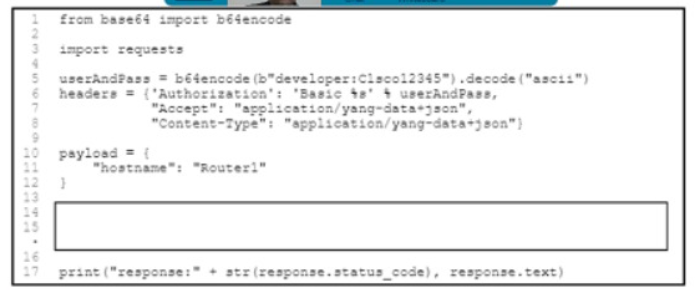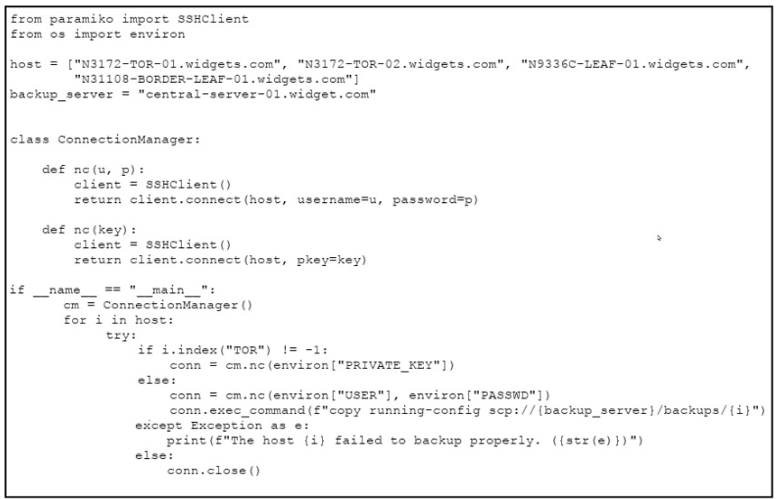
Get Cisco 350-901 Exam Dumps
Cisco Developing Applications using Cisco Core Platforms and APIs Exam Dumps
This Bundle Pack includes Following 3 Formats
Test software
Practice Test
Answers (PDF)

350-901 Desktop Practice
Test Software
Total Questions : 363

350-901 Questions & Answers
(PDF)
Total Questions : 363

350-901 Web Based Self Assessment Practice Test
Following are some 350-901 Exam Questions for Review
Refer to the exhibit.

Refer to me exhibit The Python code manages a Cisco CSR 1000V router Which code snippet must be placed in the blank m the code to update the current configuration of the targeted resource?
A)

B)

C)

D)

What is the unique identifier in the 0Auth2 three-legged authorization code flow?
How is an OAulh2 three-legged authentication flow initiated?
Refer to the exhibit.

An engineer creates an application that leverages the Ansible framework to provision CPE endpoints that have configuration changes. The application contains an Ansible playbook named provision_cpes.yml that uses the ansible.builtin.script Ansible module to execute these two Python scripts:
* gather and_create.py. which creates a JSON file named bios.json that contains the CPE models and their respective IOS file information
* load and parse.py. which loads the file data and parses it for later consumption
After several successful runs, the application fails. During a review of the Ansible execution logs, the engineer discovers an error output that indicates that one of the stages failed. What is the cause of this issue?
Refer to the exhibit.

A developer must review an intern's code for a script they wrote to automate backups to the storage server. The script must connect to the network device and copy the running-config to the server. When considering maintainability, which two changes must be made to the code? (Choose two.)
Unlock All Features of Cisco 350-901 Dumps Software
Types you want
pass percentage
(Hours: Minutes)
Practice test with
limited questions
Support